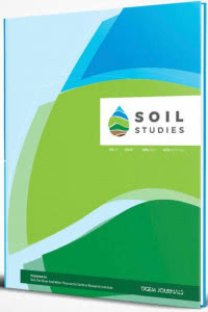Study of classification and estimation models for soil loss disturbed by engineering construction
Soil erosion induced by human, soil disturbance, engineering construction, erosion modelling, parameter selection
Study of classification and estimation models for soil loss disturbed by engineering construction
___
Bhattarai, R., Kalita, P.K., Yatsu, Sh., Howard, H.R., Sevendsen, N.G., 2011. Evaluation of compost blankets for erosion control from disturbed lands. J. Environ. Manage. 92, 803-812.Burton, G. A. and Pitt, Jr. R. E. 2002. Stormwater Effects Handbook – A ttolbox for watershed managers, scientists, and engineers. CRC Press LLC.
Chen, Y., Viadero Jr., R.C., Wei, X., Fortney, R., Hedrick, L.B., Welsh, S.A., Anderson, J.T., Lin, L.Sh., 2009. Effects of highway construction on stream water quality and macro invertebrate condition in a mid-Atlantic highlands watershed, USA. J. Environ. Qual. 38, 1672-1682.
Dong, J.Z., Zhang, K.L., Zhang, W.X., Shao, S.G., 2011. Highway waste dump shape and regional differences. Bulletin of Soil and Water Conservation (in Chinese): 3 (2), 163-167.
Forman, R.T.T. Deblinger, R.D., 2000. The ecological road- effect zone of a Massachusetts (USA) suburban highway. Conservation Biology 14, 36-46.
Hogan, D.M., Walbridge, M.R., 2007. Best management practices for nutrient and sediment retention in urban stormwater runoff. J. Environ. Qual. 36, 386-395.
Houser, D.L., Pruess, H., 2009. The effects of construction on water quality: a case study of the culverting of Abram Creek. Environ. Monit. Assess. 155, 431-432.
Jon Harbor. 1999. Engineering geomorphology at the cutting edge of land disturbance: erosion and sediment control on construction sites. Geomorphology, 31, 247-263.
Noura Bakr, David C. Weindorf, Yuanda Zhu, Allen E. Arceneaux, H.M. Selim, 2012. Evaluation of compost/mulch as highway embankment erosion control in Louisiana at the plot-scle. Journal of Hydrology, 468-469, 257-267.
SEWRPC (Southeastern Wisconsin Planning Commission). 1978. Sources of water Pollution in Southeastern Wisconsin: 1975. Technical Report No. 21. Waukesha, WI.
Storey, B.B., McFalls, J.A., Godfrey, S.H., 1996. The use of compost and shredded brosh on rights-of-way for erosion control, Research Report 1352-2F. Texas Transportation Institute, College Station, TX.
US Geological Survey. 1970. The national atlas of the United States of America. US Government Printing Office, Washington DC.
USEPA, 2005. National management measures to control nonpoint source pollution from Urban areas. Management Measure 12: Evaluate Program Effectiveness. EPA-841-B-05- 004.
Willett, G. 1980. Urban erosion, in National Conference on Urban Erosion and Sediment Control: Institutions and Technology. EPA 905/9-80-002. U.S. Environmental Protection Agency.
Xu Xianli, Liu Wen, Kong Yaping, Zhang Keli, Yu Bofu, Chen Jiding, 2009. Runoff and water erosion on road side- slopes: Effects of rainfall characteristics and slope length. Transportation Research Part D, 14, 497-501.
- ISSN: 2146-7072
- Yayın Aralığı: Yılda 2 Sayı
- Yayıncı: Toprak Gübre ve Su Kaynakları Merkez Araştırma Enstitüsü
Abdelkader DOUAOUİ, İbrahim YAHİAOUİ
İmre VAGO, Marianna SİPOS, Laszlo TOLNER, İmre CZİNKOTA, Gergely SZİLAGYİ, İbrahim ISSA, Janos KATAİ
Cengiz Kaya, Osman Sönmez, Muhammed Ashraf, Tahir Polat, Levent Tuna, Salih Aydemir
Jacek Antonkiewicz, Robert Pelka, Agnieszka Kowalewska
Amina Richa, Abdelkader Douaoui, Naima Bettahar
Study of classification and estimation models for soil loss disturbed by engineering construction
Duihu NİNG, Xiaoying LİU, Pengfei DU
Soil microbial biomass and gas-production activity (CO2) in Chernozems of different land use
Kristina Ivashchenko, Nadezhda Ananyeva, Vyacheslav Vasenev, O. Ryzhkov, V. Kudeyarov, R. Valentini
Soil erosion and conservation in two geomorphic and recreational environments
The quality of water used for irrigation of agricultural soil in the basin of Kolubara river
Radmila Pivic, Zoran Dinic, Dragana Josic, Aleksandra Stanojkovic Sebic
Ali Şenlikci, Mustafa Doğu, Emel Eren, Ebru Çetinkaya, Sevinç Karadağ
